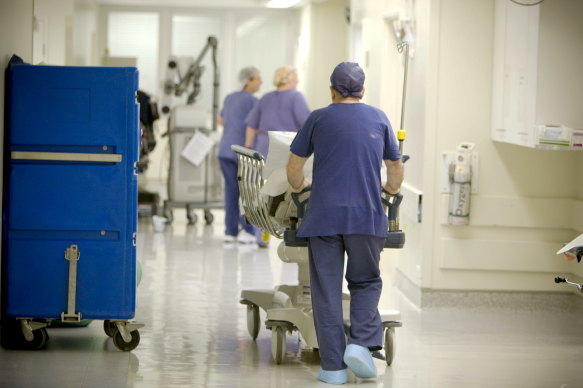Save articles for later
Add articles to your saved list and come back to them any time.
Private health insurance providers say they are suffering from inflationary pressures and the “highest prices in the world” from medical technology companies, criticising the federal government’s decision to reject their initial request to increase premiums.
Health Minister Mark Butler has declined the 31 insurers’ proposed premium increase that could have delivered an average jump of up to 6 per cent as the companies and government hold annual negotiations to set the price.
Health Minister Mark Butler has declined the 31 insurers’ proposed premium increase that could have delivered an average jump to as high as six per cent.Credit: Glenn Hunt
Private Healthcare Australia chief executive Rachel David said the proposed premium increase reflects costs they cannot control such as hospitals requesting more funding, increased demand for insurance and the cost of medical and surgical tools.
“The health funds don’t want to put up premiums by $1,” she said. “They totally get that some people are making major sacrifices to afford health insurance and a large number of people perceive they don’t have a choice because of long hospital waiting lists.
“The funds will do everything in their negotiations with government to keep that higher rate as low as possible.”
The negotiations are expected to continue into the new year as Butler said he was not inclined to approve the insurers’ proposed premium increases during a cost-of-living crisis when nearly 15 million Australians have private health insurance.
“I’ve written to every private health insurer, directing them to put forward a more reasonable figure that considers their years of record profits and the declining proportion of premiums they return to customers,” Butler said.
This year insurers have had the highest membership rates in more than five years because of Australians’ poor perception of the public health system as data from the Australian Prudential Regulation Authority revealed more than 45 per cent of Australians had hospital insurance in the September quarter and 55 per cent had general cover for extras such as dental, optical and physiotherapy.
David said insurers were determined to keep premiums low but argued that they paid some of the highest prices for generic medical devices such as replacement joints and medical sponges because of Australia’s “protheses list”, which mandates how much insurers pay for devices.
“We cannot be in a situation where the noisiest and most powerful providers like the big device companies and the medical specialists are constantly insisting that the health funds pay top dollar for everything they want, regardless of the demonstrated value or the need, and then expect the premiums to be low. They are two completely incompatible things,” she said.
However, the Medical Technology Association of Australia chief executive Ian Burgess argued that the claim they forced health funds to pay top dollar was “demonstrably false”.
“Despite making profits of $2.2 billion, insurers have failed to pass on these savings to consumers through lower premiums … MTAA is calling on the government to shine a spotlight on the accounting practices and questionable management fees of insurers,” he said.
Chief executive of health insurer NIB David Fitzgibbon said he respected the government knocking back their premium proposal and would continue to negotiate, but said customers will continue to face higher prices than necessary because the major medical device companies were able to set higher prices.
“This issue is never going to go away while health insurers are paying medical device companies directly … the solution to this constant battle is that medical devices are bundled in a payment to doctors or hospitals,” he said.
Cut through the noise of federal politics with news, views and expert analysis from Jacqueline Maley. Subscribers can sign up to our weekly Inside Politics newsletter here.
Most Viewed in Politics
From our partners
Source: Read Full Article
